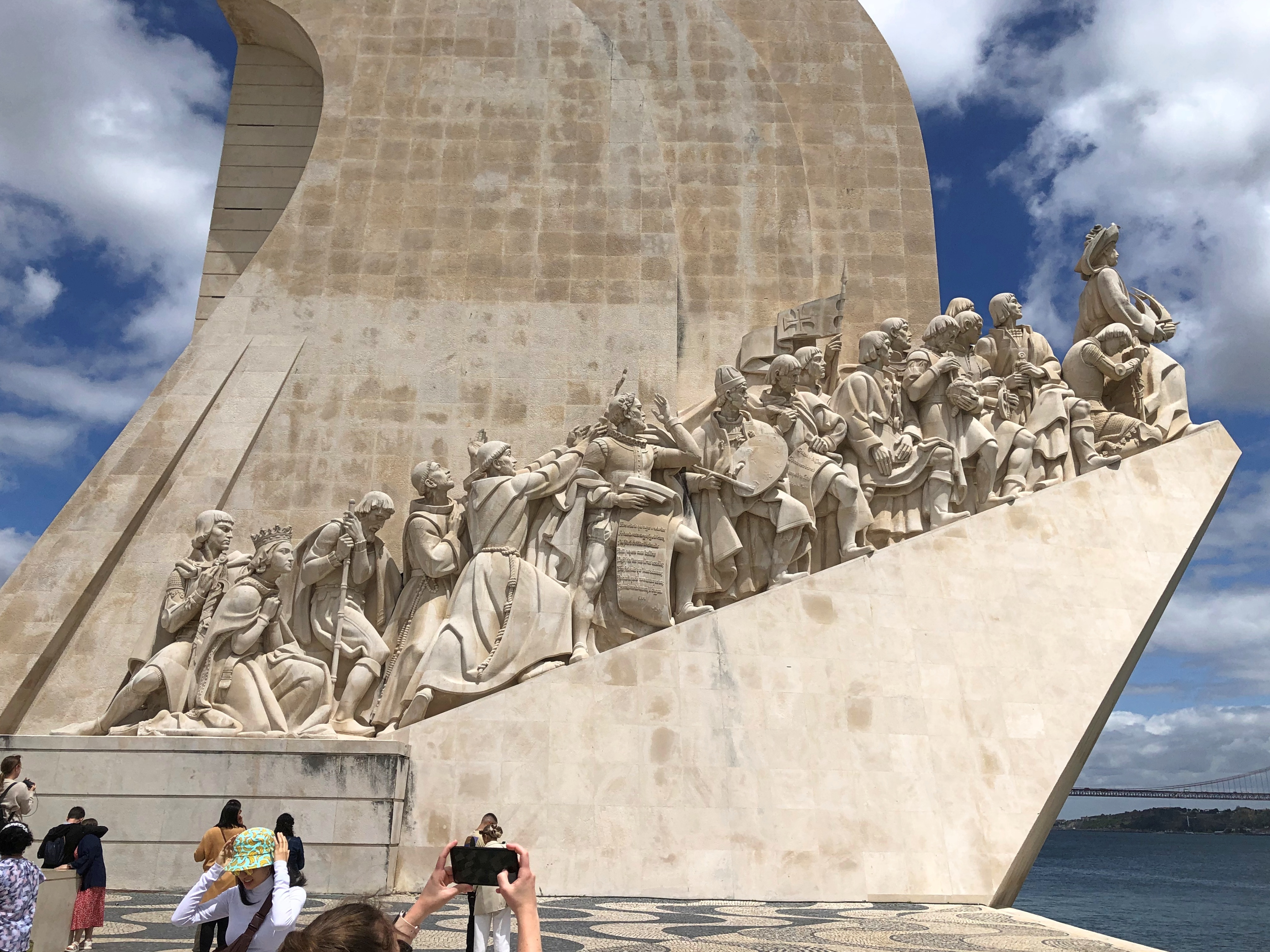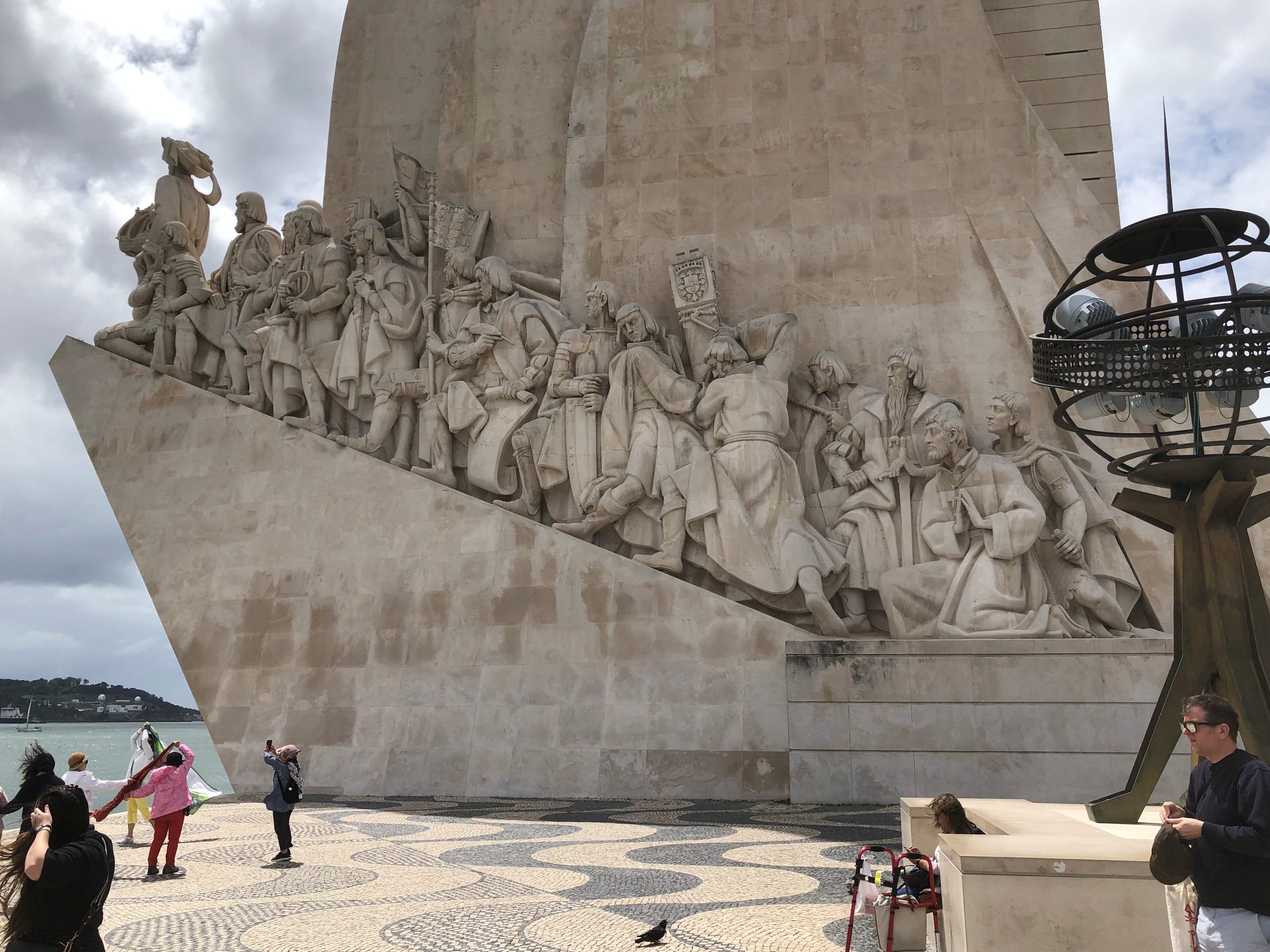Even as the longest river on the Iberian Peninsula, the Tagus doesn’t come with much in the way of associations, at least in the English-speaking world, unlike the Thames or the Rhine or the Danube or even the Vistula or the quiet-flowing Don.
Still, when the River Tagus reaches Lisbon, and reaches the ocean, it has an impressive width. But there’s more to it than that. This was a disembarkation point for the wider world for the seafaring Portuguese, and did they ever disembark.
The view is from the Belém district of Lisbon, at the western edge of the city. The Metro doesn’t go out that way; the mass transit option is a streetcar (tram), which we took early in the afternoon of May 15, riding out first to see Belém Tower (Torre de Belém).


A sturdy relic of the time when Portugal was out remaking the world, and from a time (the 16th century) when stone fortresses offered some protection against invasion by sea. An impressive work, and impressively popular.
So popular that we decided to take a stroll by the river rather than wait in that line.
Vendors set up shop near the tower, even if that only meant putting down a rug and one’s wares. If I’d been in the market for a hat, I might have bought one from her. The sun that might have inspired business for her was mostly behind clouds that day.
Other, more formally organized vendors, had vehicles or carts.


A few minutes’ walk east of the tower is the Monument of the Discoveries (Padrão dos Descobrimentos), which is a lot newer than the tower. In fact I’m almost as old as the monument, which was erected in 1960. So more a relic of the Salazar dictatorship than the far-flung Portuguese maritime empire. Still, as concrete (and rose-color stone) goes, it’s an impressive bit of work.


Two rows of Portuguese notables from the Age of Discovery line either side of the monument, including some well-known figures, such as Afonso de Albuquerque, Bartolomeu Dias, Francis Xavier, Vasco da Gama, Ferdinand Magellan and Pedro Alvares Cabral. Others I had to look up: Pedro Nunes, for instance, a mathematician who worked on navigation, and who sounds like he ought to be better known outside the world of mathematics.
Who leads the line of statues looking out to sea? At 26 feet tall, Prince Henry the Navigator, of course.